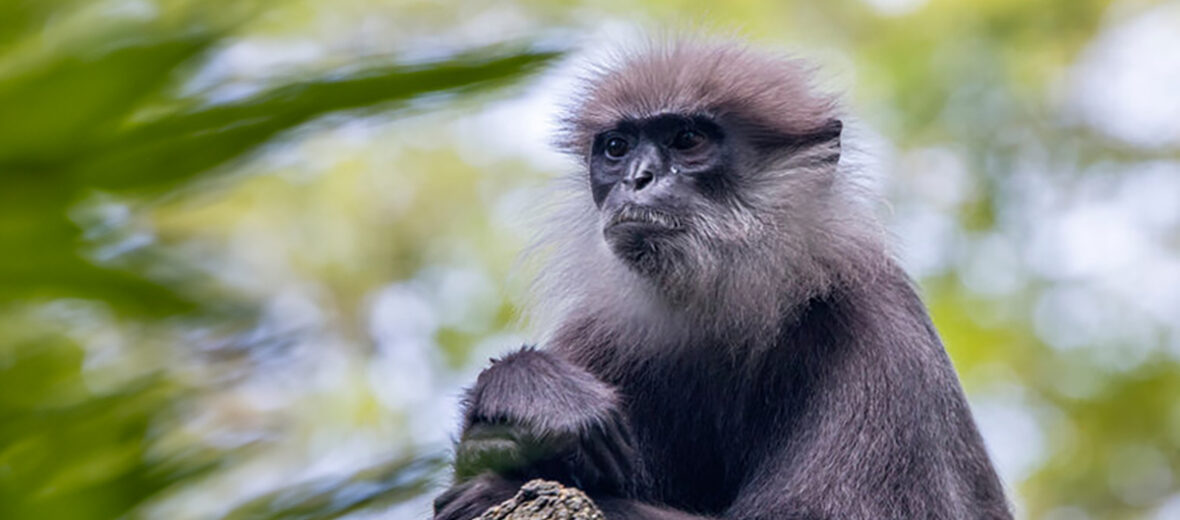
The purple-faced langur, aka purple-faced leaf monkey, hails from Sri Lanka. They prefer a rainforest habitat. These primates face the threats of habitat loss and destruction at the hands of residential and commercial developments, logging, and utility & service lines (that can cause electrocution); hunting; and trapping. The IUCN lists these monkeys as Endangered, and their populations are decreasing.
First the Stats…
Scientific name: Semnopithecus vetulus
Weight: Up to 21 lbs.
Length: Up to 26.4 inches, plus up to a 33.5 inch tail
Lifespan: Up to 26 years
Now on to the Facts!
1.) These critters were, at 1 time, very prevalent throughout Sri Lanka. But with the introduction of intense urbanization, their numbers have fallen significantly.
2.) They are diurnal (active during the day).
3.) Purple-faced langurs are heavily arboreal (spend their lives in trees).
4.) A group of monkeys is called a barrel, cartload, tribe, troop, or wilderness.
5.) Troops consist of a dominant male, up to 7 females, and their offspring.
But wait, there’s more on the purple-faced langur!
6.) Bachelor tribes are also formed and consist of up to 14 males.
7.) These primates are very vocal and produce residuals, harsh barks, and whoops.
Did you know…?
They can safely leap up to and over 39 feet, from tree to tree & branch to branch. They also travel through the trees via brachiation (swinging from branch to branch by their arms).
8.) Calls are made to signal territory and to communicate with each other, and typically occur in the morning.
9.) Males are among the most vocal of the individuals.
10.) Purple-faced langurs are herbivores (more specifically folivores – eating mostly leaves) that consume leaves, flowers, fruits, and seeds.
But wait, there’s still more on the purple-faced langur!
11.) Females undergo up to an 8 month gestation (pregnancy) that yields a single infant.
12.) Infants are weaned in up to 8 months.
13.) Besides the previously noted threats, these primates are also poisoned by farmers to keep them from raiding their crops.
14.) Larger birds of prey and pythons hunt these langurs.
Now a Short Purple-Faced Langur Video!
Be sure to share & comment below! Also, check out the Critter Science YouTube channel. Videos added regularly!
Want to suggest a critter for me to write about? Let me know here.
Some source material acquired from: Wikipedia & IUCN
Photo credit: Danny Ye



